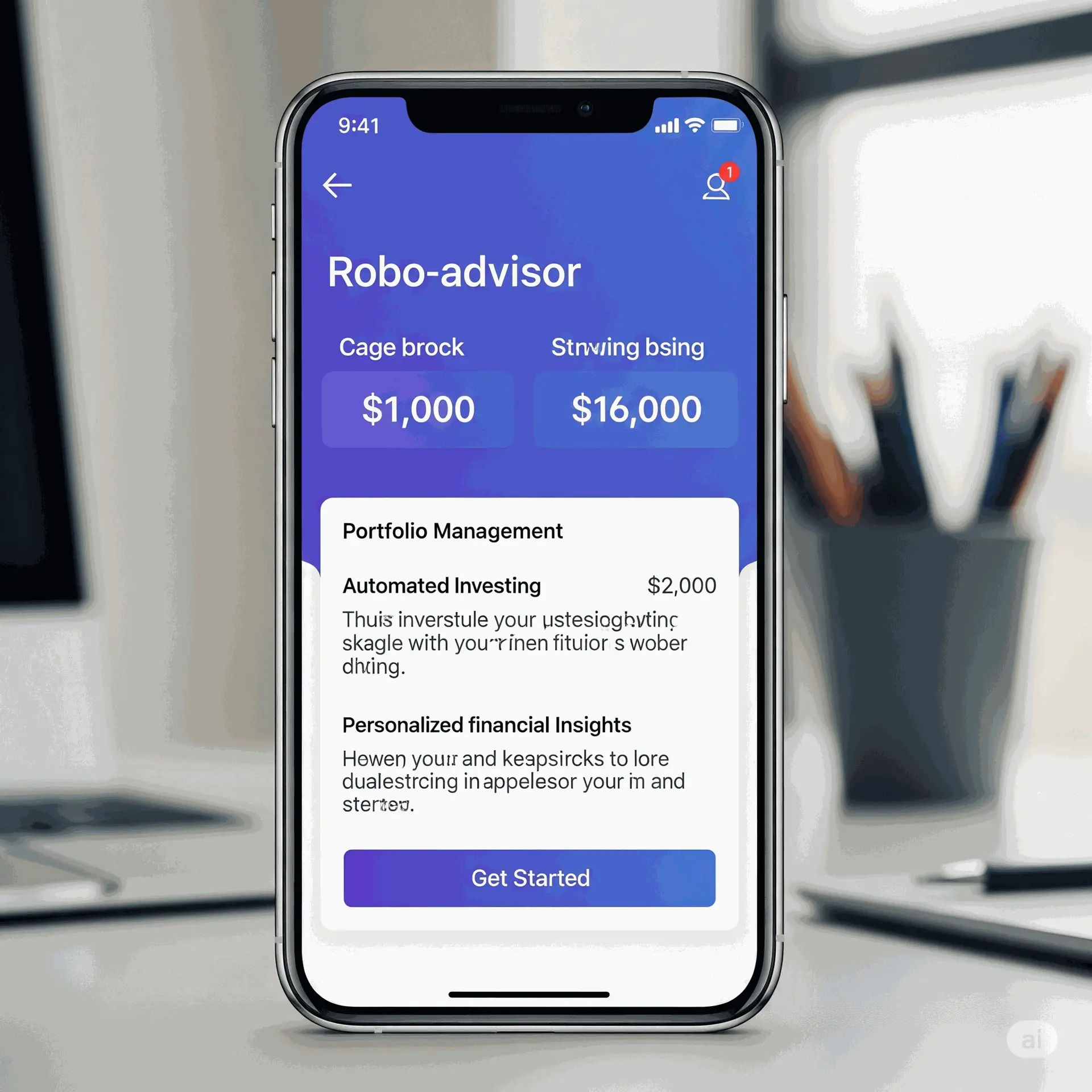Imagine having a financial advisor who works 24/7, analyzes mountains of data in seconds, and builds a personalized investment portfolio—all for a fraction of the cost of a human advisor. That’s the promise of robo-advisors, AI-powered platforms transforming wealth management in 2025. But are they the right fit for you? Whether you’re a busy professional, a beginner investor, or someone curious about automating your finances, this guide dives deep into the world of robo-advisors, exploring their benefits, limitations, and whether they align with your goals. Packed with practical insights and engaging questions, let’s uncover if automated investing is your path to financial success!
What Are Robo-Advisors?
Robo-advisors are digital platforms that use artificial intelligence (AI) and algorithms to manage your investments with minimal human intervention. By answering a few questions about your financial goals, risk tolerance, and timeline, the platform creates a diversified portfolio, typically using low-cost exchange-traded funds (ETFs). Think of it like a GPS for your money—plug in your destination, and it charts the course, adjusting as markets shift.
My first brush with robo-advisors came when a friend raved about setting up her retirement savings in minutes, without the intimidating jargon of traditional advisors. Platforms like Betterment and Wealthfront, pioneers since 2008, have made investing accessible to everyone, not just the wealthy. What’s the one financial task you wish you could automate? Share in the comments!
Why Robo-Advisors Matter in 2025
In 2025, robo-advisors are more relevant than ever, managing over $1.8 trillion globally. Here’s why they’re a game-changer for investors:
- Affordability: With fees as low as 0.25% (compared to 1%+ for human advisors), they save you money.
- Accessibility: No high account minimums—some platforms like Betterment require just $10 to start.
- Efficiency: AI analyzes market trends, rebalances portfolios, and optimizes taxes in real-time, tasks that would take humans hours.
- Democratization: Young investors, especially Gen Z (31% use robo-advisors), are embracing these tools for their simplicity.
Picture a young couple saving for a home. A robo-advisor like SoFi Invest builds a portfolio tailored to their five-year goal, automatically adjusting as interest rates fluctuate—all without costly consultations. Yet, as powerful as AI is, it’s not perfect. What’s your top priority when choosing an investment tool—cost, ease, or flexibility? Let us know below!
4 Key Features of AI-Powered Robo-Advisors
To understand if robo-advisors suit you, let’s explore their core features that make automated investing so appealing in 2025.
1. Automated Portfolio Management
AI algorithms create diversified portfolios based on your risk profile, using ETFs for broad market exposure. They rebalance automatically to maintain your target allocation, ensuring your investments stay on track. Wealthfront, for instance, offers over 240 ETFs for maximum diversification.
2. Tax-Loss Harvesting
Many robo-advisors, like Betterment, use AI to sell losing investments to offset gains, reducing your tax bill. This feature, once exclusive to high-net-worth clients, is now accessible to everyday investors.
3. Goal-Based Planning
Robo-advisors align investments with specific goals—retirement, buying a home, or funding education. Vanguard Digital Advisor, for example, excels at retirement planning with tools to estimate savings needs.
4. Low-Cost, Transparent Fees
Unlike traditional advisors, robo-advisors charge flat or percentage-based fees (e.g., 0.25% at Wealthfront). Charles Schwab’s Intelligent Portfolios even offers no advisory fees, though fund expense ratios apply.
How to Get Started with a Robo-Advisor: Your Action Plan
Ready to dip your toes into automated investing? Follow these steps to launch your robo-advisor journey in 2025:
- Assess Your Goals: Define what you’re investing for—retirement, a home, or wealth-building. Note your timeline and risk tolerance.
- Choose a Platform: Research top robo-advisors like Betterment (best for beginners), Wealthfront (great for diversification), or Vanguard Digital Advisor (ideal for retirement). Compare fees, minimums, and features.
- Complete the Questionnaire: Answer questions about your income, net worth, and risk appetite. Be honest—AI relies on accurate data to build your portfolio.
- Fund Your Account: Deposit funds (as low as $10 for Betterment or $500 for Wealthfront). Link your bank account for seamless transfers.
- Monitor and Adjust: Check your dashboard periodically to track performance. Most platforms allow goal updates as your needs evolve.
- Explore Advanced Features: Enable tax-loss harvesting or socially responsible investing (e.g., Wealthfront’s ESG funds) for added benefits.
 .
.
Common Pitfalls to Avoid with Robo-Advisors
While robo-advisors are powerful, they’re not foolproof. Here are three mistakes to steer clear of:
- Overestimating AI’s Capabilities: AI excels at data-driven tasks but can’t offer emotional support or complex estate planning like a human advisor. If you need holistic advice, consider a hybrid model.
- Ignoring Fees: Low advisory fees are great, but watch for fund expense ratios. For small balances, flat fees (e.g., Acorns’ $3/month) can eat into returns.
- Setting and Forgetting: While automation is hands-off, don’t ignore your account. Market shifts or life changes may require goal updates. I once left a robo-advisor untouched for years, only to realize my risk profile no longer matched my goals!
Have you ever tried an automated tool that didn’t quite meet your expectations? Share your experience below!
Final Thoughts
In 2025, robo-advisors are revolutionizing investing, making it affordable, efficient, and accessible for everyone. With AI-driven features like automated rebalancing, tax-loss harvesting, and goal-based planning, they’re a fantastic option for beginners, busy professionals, or anyone seeking a low-cost way to grow wealth. But they’re not a one-size-fits-all solution—those needing personalized advice or complex planning may prefer a human touch. Ready to explore automated investing? Start by researching platforms like Betterment or Wealthfront and take the first step toward your financial goals. What’s holding you back from trying a robo-advisor, or if you’ve used one, what’s your favorite feature? Drop your thoughts in the comments, and share this guide with anyone curious about AI-powered investing!
Blog by Santu Das
Personal Finance Expert and Wealth Management Enthusiast